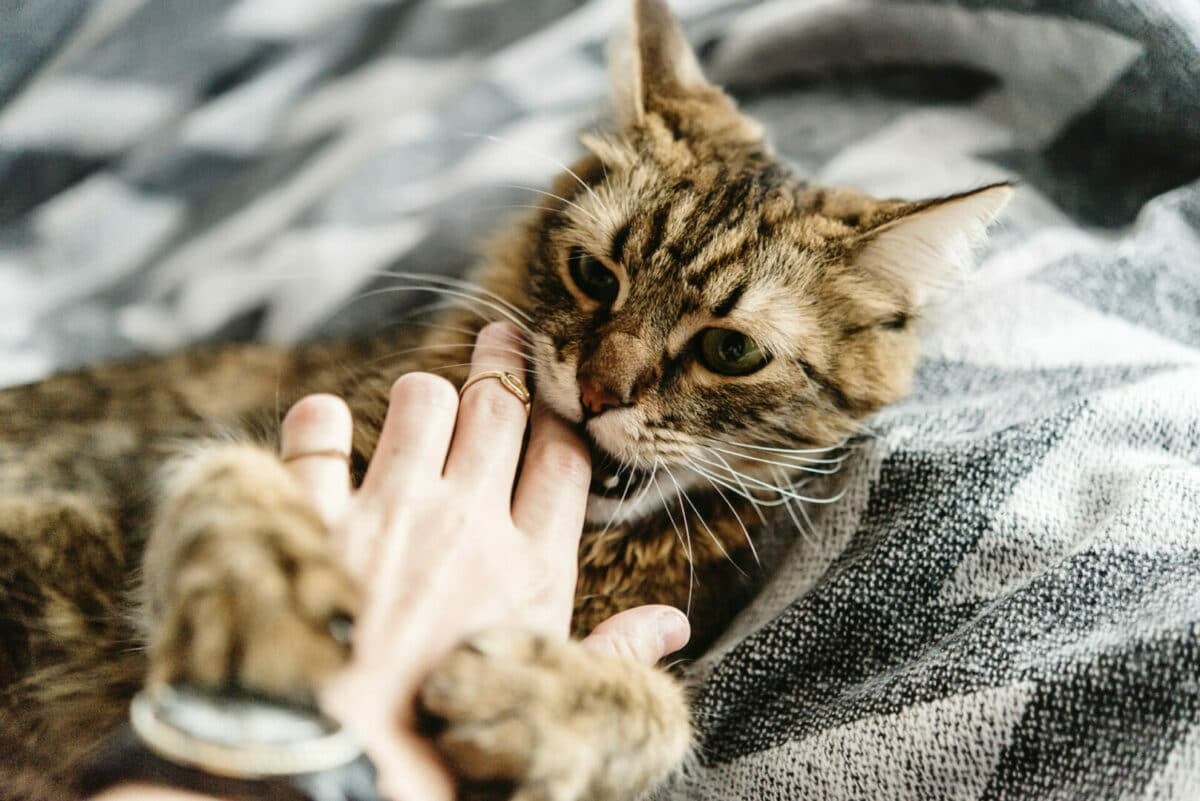When it comes to our feline friends, there might be times which we need to safely restrain them in order to help them. This is especially true if our cat is sick/hurt, it’s time for a nail trim, or if we need to administer meds. Have you ever needed to restrain your cat at home, but it only ends up in your cat becoming really angry and scratching you? Here are some safety tips to avoid a bloody outcome.
The closer the better
When you need to restrain your cat, the closer you can keep them to your body the better. If there are gaps between you and your cat, there is an area for either escape or harm. And it’s important to note that some cats are naturally more afraid and skittish than others. Dr. Carly M. Moody says,
“Veterinarians and non-veterinarian staff commonly use restraint involving immobilization for examinations and procedures when handling fearful and aggressive cats.”
If you are simply carrying a cat, a football hold is what most people would recommend, holding the cat upright and close to the body, like a running back would a football while in motion. This is recommended for calmer and more socialized cats.
Restraining for transportation
If your cat does not like to be held upside down like a baby, hold them sternally as if they are laying on their stomach in the air. Then, wrap your arm around their body and scoop them up with your arm. Place your fingers between their front legs so they can not scratch you or jump away. Use your other arm for support. If you are transporting your cat out of the house, remember that a pet carrier is the safest option.
Restraining for a toenail trim
The best place to perform a toenail trim on your cat is a surface or a quiet place, and if possible, someone should help you. There are a few options for safely restraining your cat for a toenail trim.
- Swaddle like a baby: If your cat is easy-going and laid-back, they may enjoy being swaddled. Hold them close while someone else is trimming their toenails.
- Sternal recumbency: Have your cat lay on their stomach on a table. Keep an arm around your cat to hold them tight against your torso. Keep close attention to their head, some cats like a distraction of a good ear rub during a toenail trim. You can even hold their head like a softball, gently, with their palm on top of the cat’s head and still scratch their neck and rub ears. It doesn’t hurt and you are keeping control of your cat’s head so they cannot bite.
- Lateral recumbency: Have your cat lay on their side on a flat surface. You can either hold front legs in one hand and back legs in the other with your wrist gently laying across your cat’s neck, or you can hold your cat’s head like a softball again, with your forearm laying right up against their back. Place your other hand between their front legs or back legs, whichever are needed for the toenail trim.
The taco-wrap
You can also swaddle your cat in a towel or a blanket, keeping all legs inside the blanket. If you have a really angry cat, you can also use a towel or blanket to toss over them and scoop them up. Some also refer to this as the burrito wrap–you may even have heard it referred to as the “purrito” too! Essentially, this is the feline version of swaddling like you would a newborn baby.
Scruffing
Scruffing should always be a last resort for restraint and some cats do not have much of a scruff to hang on to. Scruffing tends to escalate any anger that a cat may already be displaying.
Restraining your cat needs to be done safely. If your cat is displaying aggression towards restraint for toenails, take them to your veterinarian for a pedicure. When you are restraining your cat at home, be sure to be gentle but stern enough that no one will become injured.







